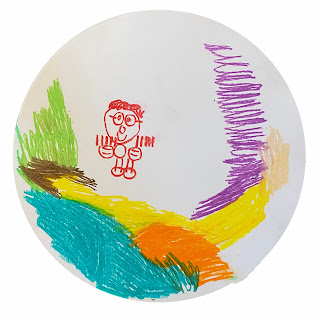The BIG Picture
The first time it happened it caught me off guard. I was walking through Target trying to get everything on my list while keeping an eye on H and his little brother.
“What’s wrong with him?”
I looked up and saw someone I didn’t know. “Excuse me?”
“I should explain, I’m a para at a local elementary and I was wondering what he has?”
As though that would qualify her to hear about my son’s medical journey. The first and only thing she saw was a diagnosis. H is more than a diagnosis.
What I hear when someone I don’t know asks about my son’s medical diagnosis is “he’s not like us”. Of course I suspect people notice his diagnosis quite often but when reality hits, it is harsh. Is this how everyone views my son? Do they all just see him as a diagnosis and not a person interested in connecting? Our commonality is we are all human. We have unique personalities, talents, and interests, but similar emotions, life experiences and need to connect with others. Can I encourage others to look beyond the diagnosis?
I photograph the biennial Lowe Syndrome Association conferences capturing the energy, friendship, learning and connecting. My favorite areas are the childcare rooms where most of the boys and young men living with Lowe syndrome (LS) hang out while their parents learn about the latest research, potential medical treatments and connect with other families on a similar journey. I bounce between the three rooms, divided by age groups, trying to quietly blend in so I can capture the boys playing and interacting in an authentic way. For many it is exciting to meet other boys with the same syndrome for the very first time. For others, especially those in the oldest age group, there are familiar friends and activities. What strikes me with this group, who definitely have physical and behavioral similarities, are the bright and often charming personalities.
Reviewing my images, I wanted people to really see these boys and young men living with LS as individuals laughing with their friends, living their best lives. The images captured this group playing, enjoying the companionship of others, socializing, and connecting. Most people didn’t know this group like I did and these images could potentially change that but would others even notice them as individuals, as how the boys see themselves? Would it create understanding and connection or build a larger barrier? Are people even interested? I selected a group of images for a photo gallery and titled it “See More of Me” encouraging viewers to look beyond the diagnosis and see these boys and young men as individuals. As I looked at each image I couldn’t help but wonder what others saw in these images. Do they identify? Are those viewing the photographs familiar with LS or experiences with persons with significant medical journeys or are their perceptions predetermined based on what they think they know? I wanted images that were relevant and interesting, hoping that the images would fill a gap between the perception and the reality of this engaging group.
I sent in an application to show these images at a local art studio. I had recently viewed portraits of people living in poverty at this gallery, the images taken so their poverty status was not noticed. The portraits were respectfully individual and authentic. I thought this studio understood authentic inclusion, but soon after sending in my application I received a notice stating that the studio focus didn’t include awareness work. Awareness?!? That they live among us? Apparently the studio also looked at my images and saw people with a medical diagnosis. How do we move past that? And, the BIG question, what if they had a voice? After three more online photo galleries it finally came to me. Let’s expand the gallery to art that they create themselves, that is authentic and really shows who they are and how they view themselves.
This month, another conference, another journey, another opportunity to see another fabulous group of boys and young men with LS socializing and connecting while their parents learn more about research breakthroughs, medical information and home care for their son. It’s time to give them a visual voice. The project is titled The BIG Picture. The boys will create art that shows us who they are in an authentic way, through their creative voices and celebrates how fabulously individual they are.
Inclusive art connects us all.
Look for The BIG Picture art collection on the www.lowesyndrome.org website later this year.




Comments
Post a Comment